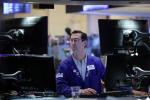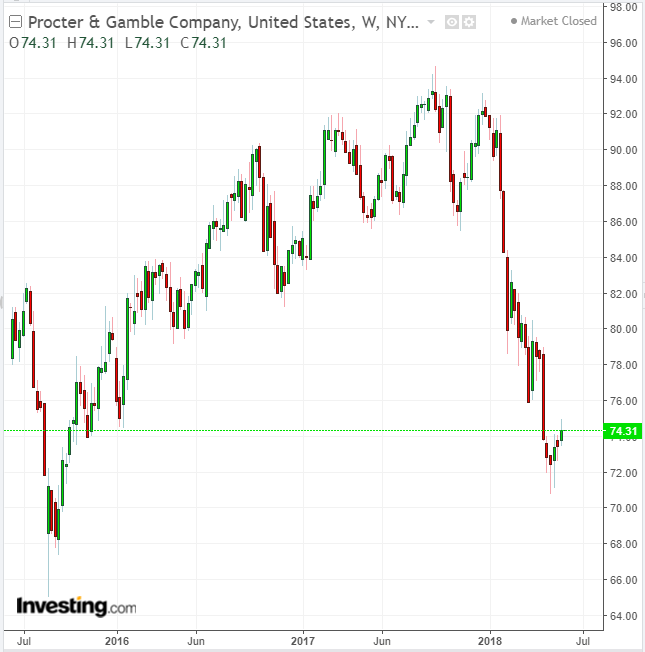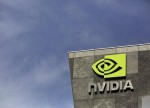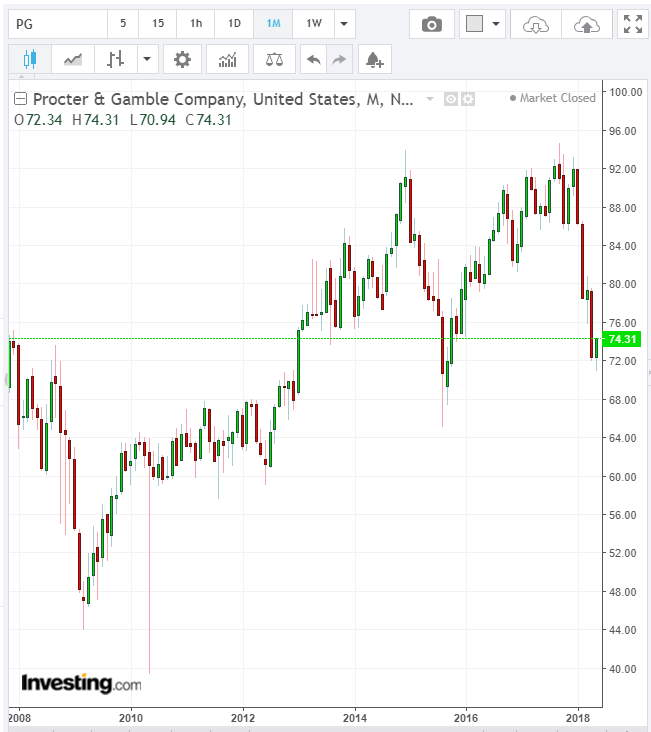
- All Instrument Types
- Indices
- Equities
- ETFs
- Funds
- Commodities
- Currencies
- Crypto
- Bonds
- Certificates
Please try another search

After A Lengthy Retreat, Why Procter & Gamble Is Attractive Again

Dividend stock investing has fallen out of fashion. Companies that reliably and religiously reward their investors don’t get a lot of financial press nor much air time on TV. Right now it's the high-flying technology names that are consuming most of our attention.
But if you ignore what's currently in vogue and actually dig a bit deeper, you’ll find that some of the top dividend paying stocks have produced returns which consistently beat the market. According to one such study by Goldman Sachs‘ wealth management division, dividend paying stocks produced ~15-fold better returns than shares of non-dividend-paying companies between 1972 and 2014.
If you’re in the market for the long haul, you should include stocks in your portfolio that not only pay dividends, but that also consistently raise their dividend payouts. This combination is a great recipe for growing an investment portfolio by enabling better performance during a variety of different market cycles.
The biggest attraction I see for investing in dividend stocks is that you can also compound your money. Compounding is a simple strategy: take dividend or interest payments and use them to buy more of the dividend- or interest-paying investment. In other words, in the case of a dividend stock, you get to buy additional shares without having to lay out supplemental dollars from your own pocket.
Companies that regularly hike their payouts are generally businesses which sell products and services without which it would be difficult for people to live a normal life. These “forever” stocks churn out cash quarter-after-quarter, providing stability and growth to your portfolio in both good and bad times.
Dividend Cash Machine But Shares Under Pressure
Procter & Gamble Company (NYSE:PG), is a consumer product powerhouse. It's also one of those largest dividend payers in the US with a dividend track-record that's hard to match. The maker of Pampers diapers and Dawn dish soap has hiked its dividend for 61 consecutive years; and it never stopped paying dividends for the last 127 years.
So, what makes P&G such a massive cash machine for dividend investors? P&G owns some of the world’s top consumer brands, including Bounty paper towels, Gillette razors, and Tide laundry detergent. The company's portfolio of such leading businesses generated more than $65 billion in annual sales last year and 22% in core operating margins, which is among the highest in the industry.

Despite its dominant position in the consumer packaged goods arena, P&G shares have been under pressure. Indeed, the stock has underperformed the broader market in recent years. The biggest challenge P&G now faces is reversing the trend of slowing sales growth amid changing consumer preferences.
As part of its turnaround strategy, over the past five years P&G has cut its roster of brands from 175 to 65, focusing on the 10 product categories where the margin is highest. During the course of that process the company has also eliminated 34,000 jobs through a combination of brand sales and buyouts, as well as plant closures—slashing more than $10 billion in costs.
But investors, led by the billionaire activist investor Nelson Peltz, want P&G to be even more aggressive in its turnaround efforts. Chief Executive Officer David Taylor has responded by buying new businesses and introducing greener versions of existing products such as the company's new Pampers Pure Protection line.
Sure Bet Or Still Risky?
There's no doubt that during the past five years investing in P&G has been a big disappointment.
However, there are signs that the company’s product re-organization and cost-cutting have started to pay off. P&G is holding or expanding market share in about half of its top product segments, up from one-third in mid-2016. P&G’s operating margins improved to 22.1% of sales last year, up from 19.6% in fiscal 2015.
Trading at $74.31 at time of writing and with an annual dividend yield of 3.94%, P&G stock may not be an attractive option for investors seeking double-digit returns over the short-term, but it’s a good turnaround bet with the potential for significant dividend increases.
By adding Procter & Gamble shares now, investors get a less sprawling, more focused company whose growth is powered by marquee brands. That's a far better performance proposition than the old P&G was able to deliver.
Related Articles

Natural gas prices have surged to multi-year highs, driven by a combination of weather, supply constraints, and rising global demand. Why Natural Gas Prices Are Climbing Natural...

One of the easiest risks to minimize in investing is excessive fund fees. That’s why, when looking for ETFs, you should always try to minimize the management fee, which is the...
Are you sure you want to block %USER_NAME%?
By doing so, you and %USER_NAME% will not be able to see any of each other's Investing.com's posts.
%USER_NAME% was successfully added to your Block List
Since you’ve just unblocked this person, you must wait 48 hours before renewing the block.
I feel that this comment is:
Thank You!
Your report has been sent to our moderators for review




Add a Comment
We encourage you to use comments to engage with users, share your perspective and ask questions of authors and each other. However, in order to maintain the high level of discourse we’ve all come to value and expect, please keep the following criteria in mind:
Perpetrators of spam or abuse will be deleted from the site and prohibited from future registration at Investing.com’s discretion.